- Home
- Equipment Reviews
-
Amplification Digital Integrated Mono Block Preamplifier Phono Solid State Tube Analog Sources Cartridges Tape Tone Arms Turn Tables Digital Sources Digital Disc Players DACs Music Servers Streaming Music Services
-
Accessories Power Conditioners Room Accoustics Racks & Stands Audio Software Other iPod iPod Speakers iPod Headphones iPod Transports Headphones Over Ear On Ear In Ear Headphone Amplifier
-
- Audio News
- Event Reports
- California Audio Show, San Francisco
- Consumer Electronics Show
- T.H.E. Show
- Rocky Mountain Audio Fest
- AXPONA
- Salon Son & Image
- Hi-Fi Show & AV Expo
- High End
- Lone Star Audio Fest
- Capital Audio Fest
- TAVES - Toronto Audio Video Entertainment Show
- AK Fest
- Home Entertainment Show
- New York Audio $ AV Show
- Open House Events
- Spotlight
- Music
- The Columns
- 2024 California Audio Show
Latest Reviews & Audio News
-

PS Audio AirLens and DirectStream DAC Mk2 Review
(July 26, 2024) -

Audio Note UK Meishu Tonmeister 300B integrated amplifier, P3 Tonmeister stereo amplifier, M6 Phono Balanced Preamp Review
(July 12, 2024) -

Douglas Schroeder’s One Year Exploration of Digital Front End Systems
(June 25, 2024) -

Arya Audio Labs RevOpods Anti-Vibration Feet Review
(June 25, 2024) -

Lego Icons Retro Radio Review
(June 14, 2024) -
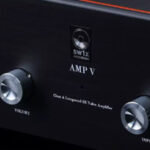
SW1X Audio Design AMP V “Titan” Special directly-heated triode integrated amplifier Review
(June 14, 2024) -
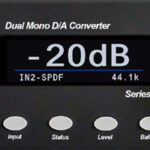
Bricasti Design Model 1 Series II D/A Converter and M5 Network Player Review
(May 24, 2024) -

Star Wars – The Empire Strikes Back – In Concert, May 2, 2024
(May 20, 2024) -
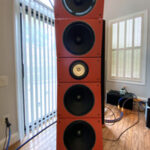
PureAudioProject Quintet15 with Voxativ AC-X field-coil open-baffle loudspeaker system Review
(May 20, 2024) -
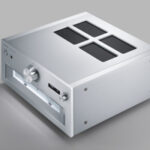
Technics SU-R1000 reference stereo integrated amplifier Review
(May 20, 2024) -
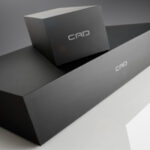
Computer Audio Design GC 1.1 & GC3.1 Ground Control external grounding systems Review
(May 20, 2024) -

Andy Grove of Audio Note UK on IO LTD
(March 23, 2024) -
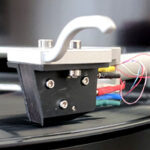
Audio Note UK IO Limited field-coil cartridge system Review
(May 20, 2024) -
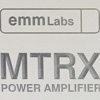
EMM Labs MTRX monoblock Input Board Upgrade Review
(March 7, 2024) -

May 2018 Sibelius Violin Concerto concert video via Berliner Philharmoniker Digital Concert Hall app
(February 16, 2024)
-
Categories
-
Amplification Digital Integrated Mono Block Preamplifier Phono Solid State Tube Analog Sources Cartridges Tape Tone Arms Turn Tables Digital Sources Digital Disc Players DACs Music Servers Streaming Music Services
-
Accessories Power Conditioners Room Accoustics Racks & Stands Audio Software Other iPod iPod Speakers iPod Headphones iPod Transports Headphones Over Ear On Ear In Ear Headphone Amplifier
Site Sections
Copyright ©1996-2024 All Rights Reserved.
Popups Powered By : XYZScripts.com

You’ve just bought a new sound system or maybe you’re just moving the one you have. You’ve brought it home and now you can’t wait to get it set up and ready to play. Here are a few tips to help you get the most out of your stereo system.
Where you put your components depends a lot on the arrangement of your listening room, but here are a few pointers that may help. To avoid confusion, try to figure out where to put everything before you begin to unpack all the equipment. The receiver/amplifier and all the associated components should be close together in an easily accessible but protected place. Consider placing them at a convenient height. There is nothing more uncomfortable than having to get on your hands and knees to operate your system. Also consider if you will need access to the rear of the equipment in the future and make an appropriate choice to accommodate access if needed.
Concerning placement of the speakers, you need to realize that speaker placement is probably the most important part of your system. Remember that if they’re too close together, you end up with a mono effect; too far apart results in a sonic hole in the middle. For maximum stereo effect, the two main speakers and the place where you’ll most often sit should form a triangle that’s roughly equal on all sides. Also, try to avoid putting the speakers where the sound will be blocked by furniture. When placing your front stereo speakers in an ideal situation, the speaker should be 2’ to 3’ out from the front and sidewalls and the tweeter should be at ear level. This enables the speakers to have adequate distance from reflecting surfaces allowing the speakers to reproduce accurate imaging and a realistic sound stage.
I mention this as a best-case scenario. The reality is often very different. Remember that speaker placement can be more important than even the components you choose. The absolute things to avoid are: never place your bookshelf speakers on the floor. Get yourself a pair of stands for them or place them on a bookshelf at the forward edge of the shelf. Try to avoid placing a speaker deep in the corner of the room and definitely don’t stick them behind furniture.
If you’re arranging a surround sound system, here are a few dos and don’ts that may help. Rear speaker placement can be a little tricky. If you place the rear speaker on a back wall firing forward you may discover that the sound passes over your head making the rear channel information appear to come from anywhere but the rear. If you sit near the rear of the room, and are placing the rear speakers behind you, consider angling them down if they are mounted high on the wall or also consider placing them on the floor behind you firing up at the ceiling. The sound will bounce off the ceiling and back down creating a remarkable rear channel effect.
As you unpack each component, don’t throw anything away. Most audio equipment comes with a warranty card and some kind of instructions. Fill out the warranty cards and mail them before they get lost in the shuffle. In some states, however, your original sales receipt is your proof of purchase. I recommend making copies of the receipt and placing one in each box for safekeeping. Be sure to save all the manuals and read them to be certain that you understand all of the features on your equipment. Also, if you have any questions on how to hook-up the equipment, the instructions will provide the answers.
If a problem comes up and you can’t find the answer in the manual or instructions, don’t hesitate to call your audio dealer or the manufacturer. Chances are they’ll be able to help you over the phone. I have found that just about every manufacturer has very good customer support. They have a stake in having happy customers, especially today with the importance of social media. If you do call the factory for customer support, try to be clear about your issues. Remember they are there to help you. So whatever you do, don’t get mad.
Finally, if you have the room, save all the cartons and packing material. If you ever move or sell the equipment, you’ll be really glad you have them. Resale of the electronics is higher if you have the original box and literature and if you ever need service, the original box and packing will be the best way to protect your gear if you have to ship it to the service center.